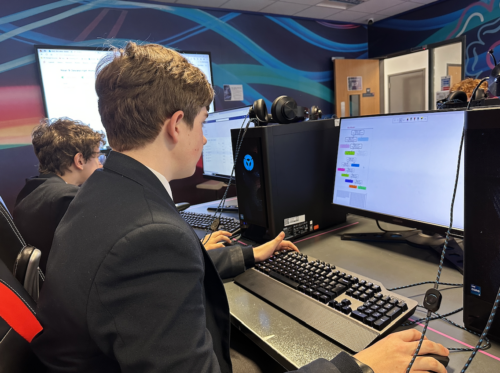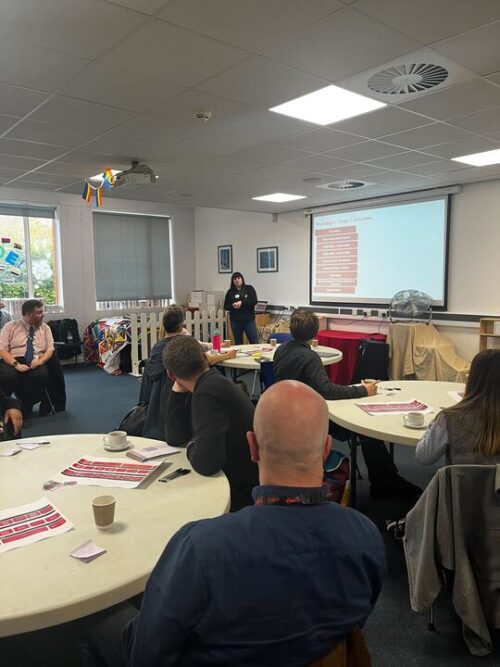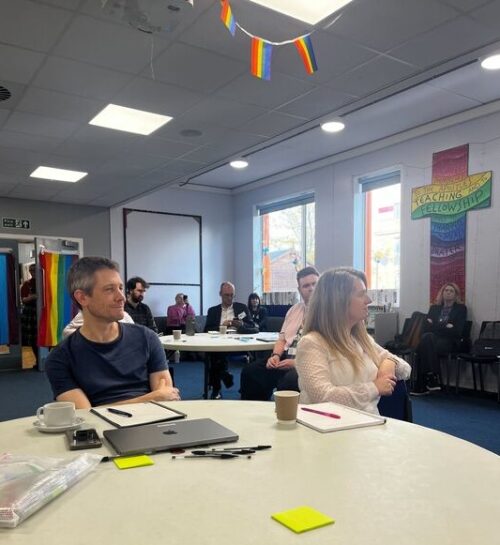Online trading has revolutionized how people participate in financial markets. The days of requiring large capital, knowledge of complex systems, or even proximity to trading hubs are long gone. Today, individuals can trade stocks, forex, cryptocurrencies, and more directly from their devices. The ease of access and wide range of assets available means that anyone with an internet connection can become an active market participant. However, with this convenience comes the need for a robust and secure platform to manage trades effectively.
As the popularity of digital assets and online trading continues to soar, Muxcap.com has emerged as one of the noteworthy platforms offering these trading opportunities. Now, let’s explore what makes Muxcap stand out in this crowded landscape.
What Is Muxcap?
Muxcap is an online trading platform that offers users access to multiple financial markets, including stocks, forex, commodities, and cryptocurrencies. Designed for traders of all experience levels, the platform emphasizes user-friendly features, advanced trading tools, and competitive spreads. Muxcap aims to provide traders with a comprehensive experience, allowing them to diversify their portfolios and explore new investment opportunities in an intuitive environment.
With a strong focus on security and transparency, Muxcap operates under strict regulations to ensure users’ funds are protected and all trades are executed with high integrity. As you will see in this Muxcap review, the platform’s range of tools, assets, and customer support options make it an appealing choice for traders worldwide.
Range of Markets on Muxcap
One of the standout features of Muxcap is its wide range of markets available for trading. Whether you’re interested in traditional assets like stocks and commodities or the booming world of cryptocurrencies, Muxcap provides a diverse selection for traders to explore. The platform allows users to trade:
- Stocks: Access a variety of global stocks across major markets such as the NYSE, NASDAQ, and more.
- Forex: Trade currency pairs from the most liquid markets worldwide, including major pairs like EUR/USD, GBP/USD, and emerging market pairs.
- Commodities: Invest in precious metals, oil, and agricultural products, helping traders hedge against inflation or capitalize on global trends.
- Cryptocurrencies: Muxcap also supports cryptocurrency trading, offering access to popular coins like Bitcoin (BTC), Ethereum (ETH), and a range of altcoins.
The platform’s broad asset offering provides traders the opportunity to diversify their portfolios and take advantage of multiple market movements, making it suitable for a variety of trading strategies.
Margin Trading on Muxcap
For traders seeking higher potential returns and willing to take on more risk, Muxcap offers margin trading. This allows users to leverage their positions, controlling a larger trade with a smaller initial deposit. Margin trading can amplify gains, but it also comes with increased risk. Here’s how it works on Muxcap:
- Leverage Options: Muxcap offers competitive leverage, allowing traders to multiply their potential profits (or losses) by borrowing capital.
- Risk Management Tools: The platform provides several risk management tools to help protect traders from significant losses, such as stop-loss orders and take-profit levels.
- Flexibility: Traders can apply margin trading across multiple asset classes, including forex, stocks, and crypto.
While margin trading can be a powerful tool for experienced traders, beginners should approach it cautiously and fully understand the risks before engaging in leveraged trading.
Customer Support
Strong customer support is critical when choosing a trading platform, and Muxcap places a high priority on providing responsive assistance to its users. The platform offers:
- 24/5 Support: Muxcap’s customer support team is available around the clock to assist with any technical or account-related issues.
- Email Support: For more detailed inquiries or non-urgent issues, users can reach the support team via email, typically receiving a response within a few hours.
- Extensive Knowledge Base: Muxcap provides a comprehensive knowledge base with guides, FAQs, and educational materials to help traders navigate the platform and understand trading strategies.
With a commitment to ensuring traders have the tools and resources they need to succeed, Muxcap provides a reliable support infrastructure that can assist users at every stage of their trading journey.
Account Opening Process
Opening an account with Muxcap is quick and easy. The platform aims to provide an accessible process for traders at all levels, and here’s how it works:
- Sign Up: Create an account by providing basic personal information, such as your name, email, and phone number.
- Verification: For security and regulatory purposes, Muxcap requires identity verification. Users will need to upload proof of identity and address documents.
- Fund Your Account: Once your account is verified, you can deposit funds using various payment methods, including bank transfers, credit cards, and e-wallets.
- Start Trading: After funding your account, you can start trading across the markets offered by Muxcap.
The process is streamlined to ensure that users can quickly begin trading while maintaining compliance with regulatory standards.
Alternatives to Muxcap Platform
While Muxcap is a competitive option, there are several other trading platforms available that offer similar features. Some alternatives include:
- eToro: Known for its social trading features, eToro allows users to copy the trades of experienced investors. It offers a wide range of assets, including stocks, cryptocurrencies, and commodities.
- Binance: A major player in cryptocurrency trading, Binance offers a huge range of crypto assets and trading pairs with competitive fees.
- MetaTrader 4/5: Popular for forex and CFDs, MetaTrader is used by millions of traders globally. It offers advanced charting, technical analysis tools, and automated trading.
- Interactive Brokers: Best for advanced traders, Interactive Brokers offers a wide range of assets, margin trading, and sophisticated trading tools for professional investors.
Each platform has its own strengths and weaknesses, so traders should carefully evaluate their needs and preferences when choosing an alternative.
Final Thoughts: Is Muxcap the Right Platform for Your Trading Goals in 2025?
Muxcap offers a comprehensive trading experience with a wide range of markets, margin trading options, and excellent customer support. Whether you’re looking to trade stocks, forex, or cryptocurrencies, the platform provides the tools and flexibility needed for traders at all levels. The easy account setup and regulatory compliance add an extra layer of trust and security for users.
However, like any platform, Muxcap is not without competition. Alternatives like eToro, Binance, and MetaTrader provide unique features that may appeal to specific types of traders. Ultimately, the best platform for you will depend on your trading goals, asset preferences, and risk tolerance.If you’re seeking a platform that offers a user-friendly interface, advanced tools, and diverse asset options, as you’ll see in this Muxcap review, Muxcap is a solid choice to consider in 2025 and beyond.















